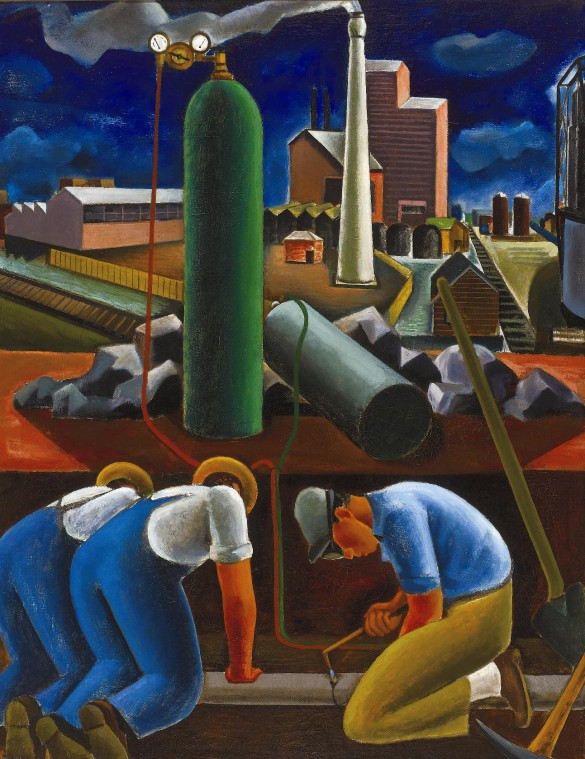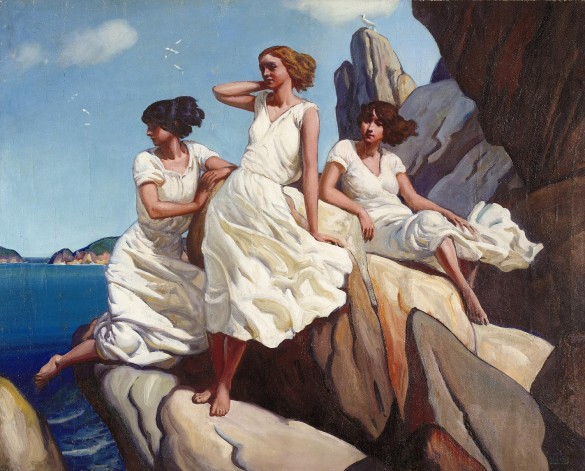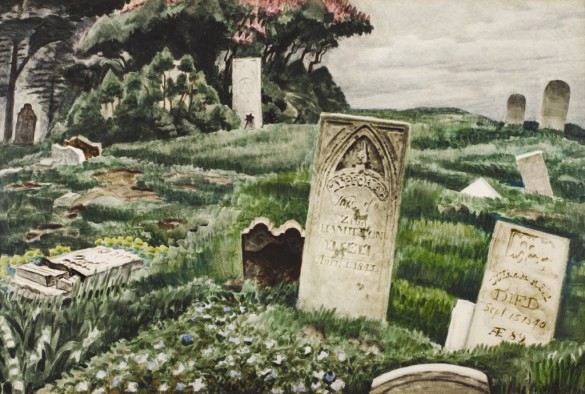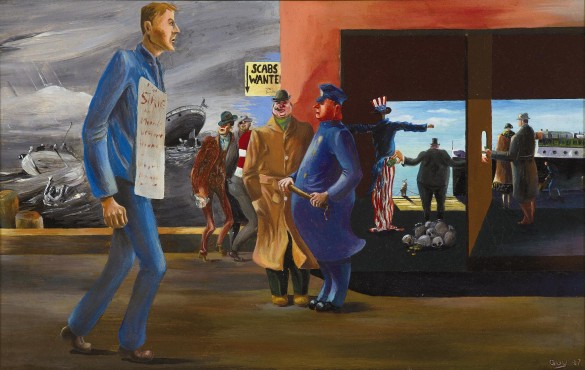Written by Nicole Gaudier, Curatorial Intern
This series will highlight 10 quick and easy facts about different cultures, artistic movements, and stylistic periods. Stay tuned for the next list in the series!

Abraham Harriton (1893 – 1986), 6th Avenue Unemployment Agency, 1937, Oil on canvas, Collection of John and Susan Horseman.
10. The Great Depression was a worldwide economic collapse; the worst in the history of the modern industrial world.
9. The Great Depression affected all industries and construction in the United States by halting or changing almost all production.

Robert Gilbert (1907 – 1988), Industrial Composition, 1932, Oil on canvas, Collection of John and Susan Horseman.
8. Some of the artistic and cultural movements from earlier in the century such as the Harlem Renaissance, jazz, and realism continued through the Great Depression.
7. There was a wave of artists who began to incorporate elements of nostalgia into their works, likely as a reaction to the challenges they were facing.

Frank Wilcox (1887 – 1964), On the Cliffs, 1930, Oil on canvas, Collection of John and Susan Horseman.
6. Americans would listen to the radio and go to the movies as an escape from their lives and to learn how America was fighting against its social and economic problems.

Reginald Marsh (1897 – 1955), Mad Men of Europe, 1940, Watercolor on paper, Collection of John and Susan Horseman.
5. Many artists mirrored the nation’s weariness from the Great Depression with sad scenes that alluded to hardship and even death.

Charles Ephraim Burchfield (1893 – 1967), In Memoriam, 1936, Watercolor on paper, Collection of John and Susan Horseman.
4. Many artists portrayed the despair held by most Americans as a result of the record high unemployment rate and low job availability throughout the Great depression.

James Meikle Guy (1909 – 1983), On the Waterfront, 1937, Oil on Masonite, Collection of John and Susan Horseman.
3. President Franklin D. Roosevelt, who was elected in 1932, began many programs and projects, collectively known as the New Deal, that would provide jobs, stabilize the economy, and provide relief to those in need.
2. Despite the New Deal’s many measures and their alleviation of the worst effects of the Great Depression, it was the humming factories that supplied the American war effort that finally brought the Depression to a close.

Raphael Gleitsmann (1910 – 1995), House at Sunset, Medina County, c. 194, Oil on Masonite, Collection of John and Susan Horseman.
1. Although the Great Depression lasted from 1929 to the early 1940s, it affected many aspects of American life and culture for the remainder of the 20th century.
To see more paintings from Modern Dialect, come visit the Museum before January 5th, 2014.



[…] Top 10 Facts About The Great Depression | The Cummer Museum of … […]